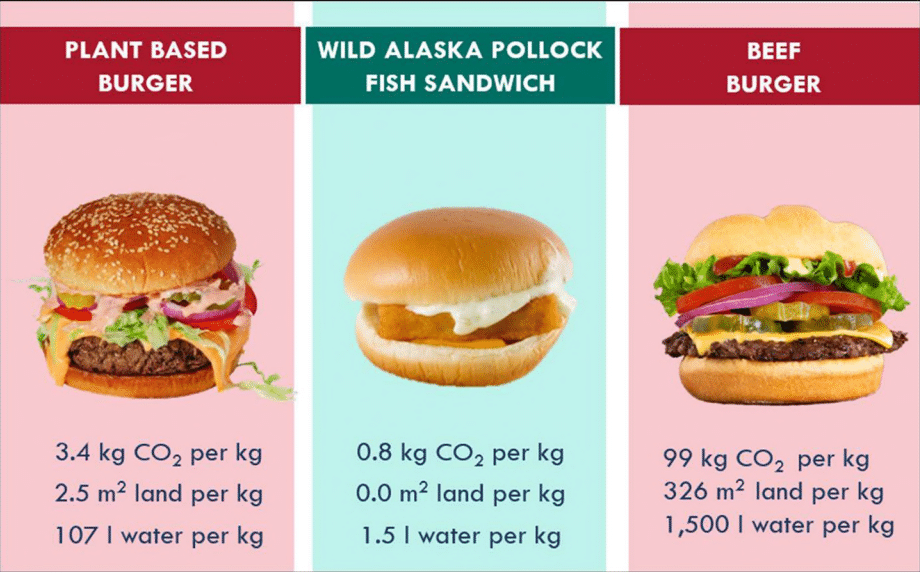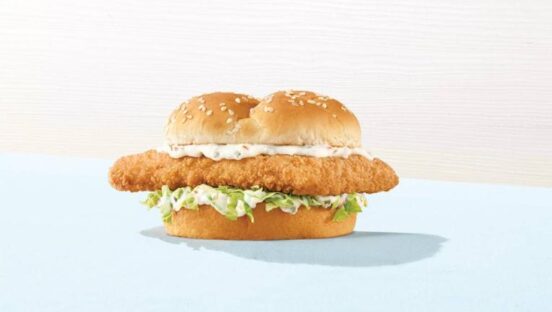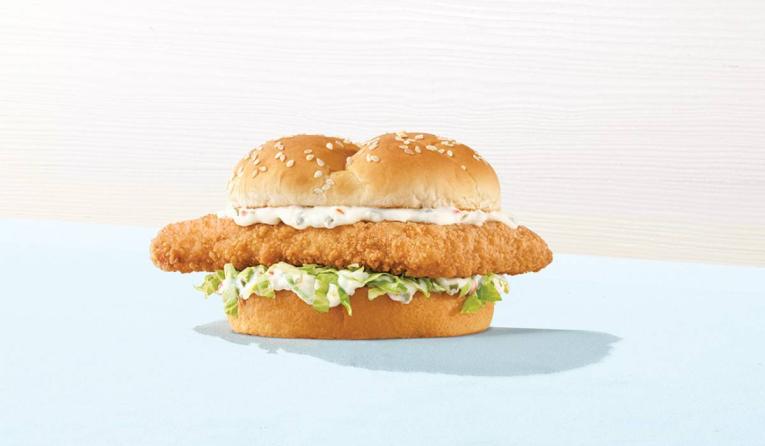For many of us in the seafood industry, the Lent season sometimes feels like a second Christmas.
Year after year, the seafood industry continues to see an uptick in sales during Lent—the Christian observance period before Easter. For those observing, Lent often means no “flesh meat“ (i.e. chicken, pork, turkey, beef) on Ash Wednesday or on any Friday during the six-week religious period. The definition of meat can vary—technically, people can eat alligators during Lent, but I don’t expect to see Alli-burgers hitting a fast food menu anytime soon.
Naturally, fish or other protein alternatives become go-to substitutes, and many restaurants work to adjust their menus and inventory to reflect, support and service guests that observe this time of the year. This increased demand then becomes cyclical every year, a return to a highlighted “fish season” at many restaurants that become an important resource to observers and consumers. Increasing the quantity of fish sandwiches during Lent is a smart idea to serve customers, but why stop there? Offering and promoting delicious seafood options throughout the year is an even better one for modern restaurants—not just for bottom lines but also for our planet.
Some Quick Stats on Lent
Currently, the catholic population represents nearly 20 percent of the United States population (according to the U.S. Religion Consensus). A 2017 Lifeway Research survey found more than 40 percent of people who attend church services at least once a month said they observe Lent.
As a result, there could be more than 20 million consumers in the U.S. alone looking for alternatives to flesh meat each Friday during this period. Accordingly, menu research firm Datassential reports that restaurants have seen a 20 percent increase in seafood sales during this period.
Within the seafood category, many full-service restaurants take advantage of higher margin products, like swordfish, salmon, and bluefin tuna; however, what they tend to overlook is the more healthy, sustainable, and affordable proteins of the sea—the wild caught white fish species.
Some leading quick-service take advantage of providing tasty whitefish sandwiches and making fun deals for their guests. For example, Arby’s is offering 2 Crispy Fish Sandwiches for $6 this year, and social media is filled with influencers taste-tasting various offerings around the fast food world. These options hit a nerve, and the product itself is growing in stature and menu acceptance.
Increased Demand = Increased Revenues
When introduced to these proteins, consumers love them.The familiarity with these species is changing, but it’s not only because of the taste.
Accordingto theGenuine Alaska Pollock Producers Association (GAPP) and Ketchum’s 2023 Food Consumer Study, 34 percent of millennials identified with a “fish-eater” consumer profile (compared to 28 percent in 2022) and 5.3 million new millennials entered the fish-eating audience since last year, with nearly half (2.6 million) stating familiarity with Wild Alaska Pollock.

This holds true with the growing diversity of consumers. 13.1 million new multicultural consumers have entered the fish-eating audience since last year, with two-thirds (9.1 million) becoming familiar with Wild Alaska Pollock.
With more and more consumers expressing interest in sustainability and sourcing issues, it’s important to note that fish originating in the U.S. have a much stronger consumer preference (87 percent) compared to more than 66 percent unlikely to purchase fish from either China or Russia.
Benefits for Our Planet
Restaurants that promote seafood initiatives should absolutely being doing so throughout the year, not just for six weeks. In fact, it’s much better for the planet when permanent. Some fish sourcing has proven to leave a much smaller and sustainable footprint than the farming and distribution of beef, pork, chicken, and even tofu! For example, Wild-Caught Alaska Pollock and Pacific Hake (which are used in many fish fillets and fish sticks) are healthy, delicious, and sustainable protein sources when you take land use, freshwater, and carbon into account. These two fisheries are ranked by the well-respected Marine Stewardship Council as the two most sustainable fisheries in the world.
Some quick stats:
Pollock and Hake require zero gallons of freshwater to produce 3.5 ounces of food compared to more than 750 gallons for the same amount of beef.
Pollock and Hake products account for 2.2-3.3 poundsCO2-e for every pound of product, compared to nearly 6 pounds for Tofu and 130 pounds for beef. For perspective, a plant-based burger produces 7.5 pounds CO2-e per pound compared to 1.8 pounds for a pollock fish sandwich.
These fisheries have a very healthy biomass, and the industry catches very little fish (approximately 15 percent) compared the total population size. In addition, for every 200,000 pounds of fish caught, 97–98 percent is pollock or hake—making these some of the cleanest and most efficient fisheries on Earth.
Consumers Need More Access to Pollock
Our experience—as the leading at-sea processor of Wild-Caught Alaska Pollock, Pacific Hake, and as the U.S.’s biggest supplier—is that the biggest problem is access. Not enough consumers have easy to find options to purchase pollock and hake products to substitute their menu choices.
Sure, many consumers can get fish sticks in supermarkets—and of course the delicious fish sandwiches at McDonalds, Arby’s and more—but there is considerable whitespace opportunity for other restaurants and chains to tap into this resource.
The sky is the limit for restaurants to incorporate more pollock and hake products in their menus. With their versality to create and provide more menu options, beyond just during Lent, these proteins allow restaurants to cater to a much larger set of customers that want affordable and sustainable fish. Doing so on a permanent basis keeps these customers engaged and will increase sales and profits.
There’s always going to be room for high-end seafood options, but sustainably-harvested options like pollock have the opportunity to create change among a mass audience looking for quality options at a reasonable price. It’s good for consumers, restaurants, and importantly, the planet. The three Ps—Pollock, Profits and Planet—should be on the minds of restaurant operators year-round, because great fish is a treat worth offering.
Rasmus Soerensen is the Chief Commercial Officer of American Seafoods, a global leader in sustainable protein and one of the world’s largest world’s largest at-sea processors of Wild Alaska Pollock and Wild Pacific Hake, where he oversees production planning, worldwide sales and all marketing activities. For more than 20 years, Rasmus has helped support and guide American Seafoods’ business development initiatives as the company feeds more than one billion people annually.









